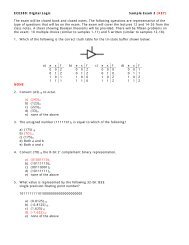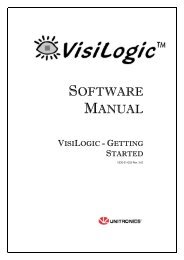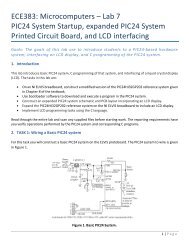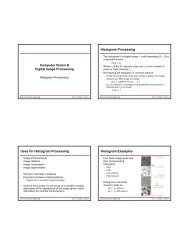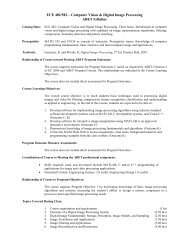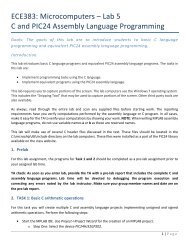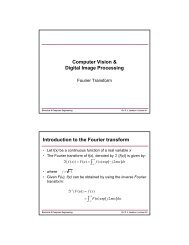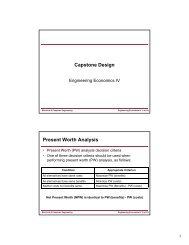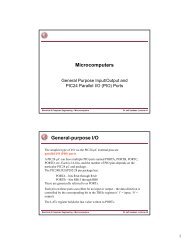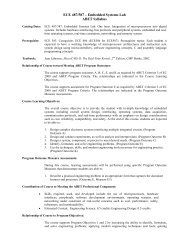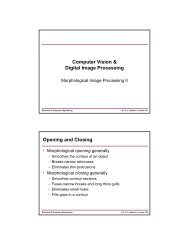DE2-115: User Manual
DE2-115: User Manual
DE2-115: User Manual
You also want an ePaper? Increase the reach of your titles
YUMPU automatically turns print PDFs into web optimized ePapers that Google loves.
• Data transmit from the device to controller<br />
After sending an enabling instruction to the PS/2 mouse at stream mode, the device starts to send<br />
displacement data out, which consists of 33 bits. The frame data is cut into three similar slices, each<br />
of them containing a start bit (always zero) and eight data bits (with LSB first), one parity check bit<br />
(odd check), and one stop bit (always one).<br />
PS/2 controller samples the data line at the falling edge of the PS/2 clock signal. This could easily<br />
be implemented using a shift register of 33 bits, but be cautious with the clock domain crossing<br />
problem.<br />
• Data transmit from the controller to device<br />
Whenever the controller wants to transmit data to device, it first pulls the clock line low for more<br />
than one clock cycle to inhibit the current transmit process or to indicate the start of a new transmit<br />
process, which usually be called as inhibit state. After that, it pulls low the data line then release the<br />
clock line, and this is called the request state. The rising edge on the clock line formed by the<br />
release action can also be used to indicate the sample time point as for a 'start bit. The device will<br />
detect this succession and generates a clock sequence in less than 10ms time. The transmit data<br />
consists of 12bits, one start bit (as explained before), eight data bits, one parity check bit (odd<br />
check), one stop bit (always one), and one acknowledge bit (always zero). After sending out the<br />
parity check bit, the controller should release the data line, and the device will detect any state<br />
change on the data line in the next clock cycle. If there‟s no change on the data line for one clock<br />
cycle, the device will pull low the data line again as an acknowledgement which means that the data<br />
is correctly received.<br />
After the power on cycle of the PS/2 mouse, it enters into stream mode automatically and disable<br />
data transmit unless an enabling instruction is received. Figure 6-16 shows the waveform while<br />
communication happening on two lines.<br />
94



